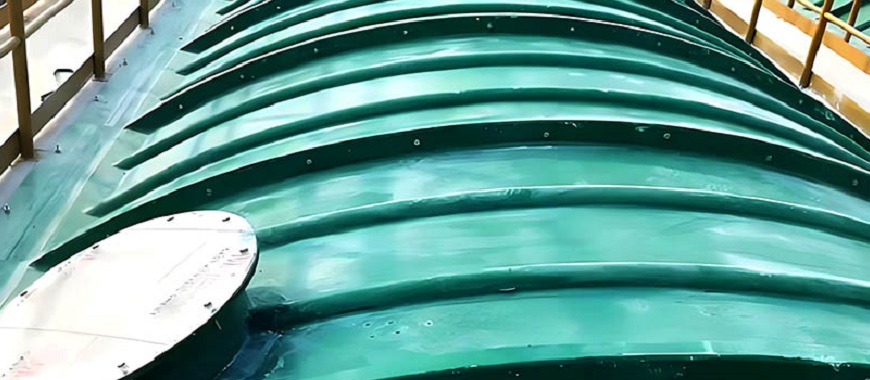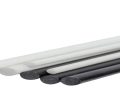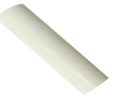
Fiberglass tub with tile above have gained immense popularity in modern bathrooms due to their durability, affordability, and ease of installation. They offer a sleek, smooth surface that enhances the overall aesthetic of a bathroom while being lightweight and resistant to chipping. The trend of installing tile above fiberglass tubs adds an elegant touch, allowing homeowners to customize their bathing space with various designs and finishes. However, it’s essential to understand the pros and cons of this combination. While the addition of tile can elevate the look and increase the water resistance of the area, it may also introduce challenges regarding installation and maintenance. Understanding these factors is crucial for making informed design choices in your bathroom renovation.
Exploring the Advantages of Fiberglass Tubs with Tile Above
Fiberglass tubs offer numerous advantages that make them a popular choice for homeowners. When considering a fiberglass tub with tile above, these benefits become even more apparent. Here are some key advantages:
Lightweight and Easy to Install
- Fiberglass tubs are significantly lighter than traditional materials like cast iron or acrylic, making them easier to handle during installation.
- The installation process is generally quicker, often requiring less labor and time.
| Material | Weight | Installation Difficulty |
|---|---|---|
| Fiberglass Tub | Light (50-75 lbs) | Easy |
| Cast Iron Tub | Heavy (300 lbs) | Difficult |
| Acrylic Tub | Moderate (100 lbs) | Moderate |
Cost-Effective Option
- Fiberglass tubs are typically more affordable than many alternatives, making them a great choice for budget-conscious homeowners.
- They often come in a variety of styles and finishes, allowing for personalization without breaking the bank.
Low Maintenance Requirements
- The smooth surface of fiberglass makes cleaning straightforward, requiring just regular soap and water.
- They are inherently resistant to mold and mildew, which helps maintain a clean and healthy bathroom environment.
When opting for a fiberglass tub with tile above, homeowners enjoy a combination of affordability, ease of installation, and low maintenance, making fiberglass tubs an attractive choice for any bathroom renovation.
Fiberglass Insulation Hot Tub: Maximize Energy Efficiency Today
Benefits of Tiling Above Fiberglass Tub with Tile Above
Tiling above fiberglass tubs offers several advantages that can enhance both the functionality and appearance of your bathroom. When considering a fiberglass tub with tile above, here are some notable benefits:
Aesthetic Appeal
- Tiling provides a stylish and polished look, significantly enhancing the overall visual appeal of the bathroom.
- The combination of tiles and fiberglass creates a modern, sophisticated design that can elevate the ambiance of the space.
Variety of Tile Options
- Homeowners have access to a wide range of tile materials, including ceramic, porcelain, and glass, allowing for extensive customization.
- Tiles come in numerous colors, patterns, and textures, enabling you to create a unique design that reflects your personal style and complements the rest of the bathroom decor.
Improved Durability
- Tiling adds an extra layer of protection to the fiberglass surface, making it less susceptible to scratches, dents, and wear over time.
- The hard surface of tiles helps protect against impacts, ensuring that the underlying fiberglass tub remains intact and functional for longer.
Enhanced Water Resistance
- Properly installed tiles can provide superior water resistance compared to just a fiberglass surface, helping to prevent leaks and water damage.
- This feature is particularly beneficial in maintaining the integrity of the tub and the surrounding area.
Easy Maintenance
- Tiles are relatively easy to clean and maintain, as they resist staining and can be wiped down easily.
- Regular cleaning helps prevent mold and mildew buildup, promoting a healthier bathroom environment.
Choosing a fiberglass tub with tile above not only enhances the bathroom’s aesthetic appeal but also provides durability and customization options, making it a practical choice for homeowners looking to improve their space.
Affordable Fiberglass Hot Tub Kit for Relaxation
Proper Installation Techniques for Fiberglass Tub with Tile Above
When it comes to installing a fiberglass tub with tile above, following proper installation techniques is crucial to achieving a durable and visually appealing finish. Here’s a detailed look at essential steps and considerations for the installation process:
Importance of Ensuring a Smooth and Even Surface
Before tiling, it’s vital to prepare the fiberglass surface thoroughly. An uneven or rough surface can lead to poor tile adhesion and an unattractive finished product. Here are key steps to ensure a smooth base:
- Cleaning: Remove any soap scum, dirt, or grease from the fiberglass surface. Use a non-abrasive cleaner to avoid scratching.
- Sanding: Lightly sand the fiberglass to create a rough texture that promotes better adhesion for the tiles.
- Leveling: Use a level to check the surface. If there are any low spots, consider using a patching compound to fill them in, ensuring an even base for tile installation.
Recommended Adhesive and Tiling Materials
Choosing the right adhesive is critical for the longevity of your tiled surface. Here are some recommendations:
- Adhesives: Use a modified thin-set mortar specifically designed for use with fiberglass and tiles. This type of adhesive offers excellent bonding strength and flexibility.
- Tiles: Opt for waterproof tiles, such as porcelain or ceramic, as they resist moisture and are ideal for wet environments. Ensure the tiles have a non-slip surface for safety.
Step-by-Step Guide to Installing Tile Above a Fiberglass Tub
- Gather Tools and Materials: Collect necessary tools, including a notched trowel, tile spacers, a tile cutter, a level, and grout.
- Apply Adhesive: Using the notched trowel, spread a layer of adhesive on a small section of the fiberglass tub. Work in manageable areas to ensure the adhesive does not dry out before you place the tiles.
- Lay the Tiles: Begin placing the tiles in your chosen pattern, pressing them firmly into the adhesive. Use tile spacers to maintain even gaps between tiles for grout application.
- Check Alignment: Regularly check that the tiles are level and aligned properly. Adjust as necessary before the adhesive sets.
- Cut Tiles as Needed: Use a tile cutter to trim tiles to fit around edges and corners of the tub. Ensure that any cuts are smooth and fit snugly.
- Allow to Cure: After laying all tiles, allow the adhesive to cure as per manufacturer instructions, usually 24 hours.
- Grouting: Once the adhesive has cured, remove the tile spacers and apply grout to the gaps using a grout float. Ensure that the grout is packed tightly and wipe off any excess from the tile surface with a damp sponge.
- Sealing: After the grout has dried, consider applying a sealant to the grout lines to prevent moisture infiltration and stains.
By following these proper installation techniques for a fiberglass tub with tile above, you can ensure a beautiful and functional tiled surface that enhances your bathroom’s aesthetics while providing durability and safety.
Thin Fiberglass Tubes for Versatile Industrial Applications
Common Concerns and Solutions for Fiberglass Tub with Tile Above
When considering a fiberglass tub with tile above, homeowners may have various concerns regarding the installation and maintenance of this combination. Here, we address common issues and provide effective solutions to ensure a successful and lasting outcome.
Addressing Concerns About Tile Weight and Stability on Fiberglass
One significant concern with installing tile over a fiberglass tub is the weight of the tiles and whether they can maintain stability without compromising the integrity of the tub. Here are some solutions:
- Choose Lightweight Tiles: Opt for porcelain or ceramic tiles that are specifically designed for wall applications. These materials are durable yet lighter than thicker tiles, reducing the overall weight on the fiberglass structure.
- Proper Adhesive Use: Ensure you use a high-quality, modified thin-set mortar that provides strong adhesion while accommodating slight movements. This flexibility can help distribute the weight evenly and reduce the risk of cracking.
Preventing Potential Water Damage and Mold Growth
Water damage and mold growth are valid concerns when tiling over a fiberglass tub, especially in wet environments. To mitigate these risks, consider the following:
- Sealant Application: After grouting, apply a waterproof sealant over the grout lines to prevent moisture from seeping through and causing mold growth. This step is crucial for ensuring the longevity of the installation.
- Ventilation: Ensure your bathroom is well-ventilated. Use exhaust fans to minimize humidity, which can lead to mold growth. Regularly check for leaks or areas where water may accumulate.
Tips for Maintaining the Integrity of the Installation Over Time
To keep your fiberglass tub with tile above in excellent condition, ongoing maintenance is essential. Here are some tips:
- Regular Cleaning: Clean the tiles and grout regularly with a mild, non-abrasive cleaner. Avoid harsh chemicals that could degrade the adhesive or grout over time.
- Inspect for Damage: Periodically check the tile installation for any signs of damage or wear, such as cracked tiles or loose grout. Addressing these issues early can prevent larger problems down the line.
- Reapply Sealant as Needed: Depending on usage, consider reapplying sealant to the grout lines every couple of years to maintain waterproofing and protect against moisture infiltration.
By addressing these common concerns and implementing the suggested solutions, you can ensure a successful installation and long-lasting performance of your fiberglass tub with tile above, enhancing both functionality and aesthetics in your bathroom.
Exploring Fiberglass Tub with Tile Above and Alternative Options
When considering a fiberglass tub with tile above, homeowners may explore alternative materials for shower and tub enclosures that can provide different aesthetics, functionality, and ease of maintenance. Here, we discuss various alternatives and the considerations that come with each choice.
Alternative Materials for Shower/Tub Enclosures
Acrylic Panels:
- Acrylic panels are a popular alternative to tile. They are lightweight, easy to install, and come in a variety of colors and styles. Unlike tiles, acrylic surfaces are non-porous, which helps prevent mold and mildew growth. Additionally, they are easier to clean since they lack grout lines.
Fiberglass Surrounds:
- Fiberglass surrounds are often used in combination with fiberglass tubs. They offer a seamless look and are generally more affordable than tiling. They are also resistant to chipping and cracking, making them durable in wet environments. However, they may not provide the same level of customization as tiles.
Vinyl Wall Panels:
- Vinyl wall panels are another economical option. They are lightweight, resistant to moisture, and come in various designs. However, homeowners should be aware that they may not be as durable as tile or acrylic options and can be prone to scratching.
Stone or Quartz:
- For a high-end look, stone or quartz surfaces can be used above fiberglass tubs. These materials offer natural beauty and durability but come at a higher cost. They require regular sealing to maintain their appearance and prevent staining.
Considerations for Homeowners Choosing Between Tiling and Other Methods
When deciding between tiling a fiberglass tub with tile above or using alternative materials, homeowners should consider the following factors:
- Budget: Tiling can be more expensive due to labor costs and the price of materials, while options like acrylic or vinyl panels are typically more budget-friendly.
- Maintenance: Consider the long-term maintenance requirements. Tile requires regular cleaning and sealing, while acrylic or fiberglass surrounds may need less upkeep.
- Aesthetic Preference: Personal preference plays a significant role. Tiles offer a high degree of customization in terms of color, pattern, and layout, while other materials might offer a more streamlined, modern look.
- Installation Complexity: Tiling can be a more labor-intensive process, requiring skilled labor to ensure proper installation. Alternatives like acrylic panels may be easier to install, especially for DIY enthusiasts.
By weighing these alternatives and their respective pros and cons, homeowners can make an informed decision that aligns with their style, budget, and functional needs when considering a fiberglass tub with tile above.
FAQs about Fiberglass Tub With Tile Above
Yes, you can tile above a fiberglass tub, and it can be a great way to enhance the aesthetic appeal of your bathroom. However, it’s crucial to ensure that the fiberglass surface is smooth and properly prepared before installation. Using a suitable adhesive designed for tile applications is essential for ensuring that the tiles adhere correctly. Additionally, the weight of the tile should be considered, as it may require additional support, especially if you’re using larger tiles. It’s advisable to consult with a professional if you’re unsure about the installation process to prevent potential issues, such as cracking or peeling over time.
Tiling above a tub surround is also possible, but it depends on the materials used for the surround itself. If the surround is made of a sturdy, flat surface, tiling can add both beauty and functionality. Proper preparation is necessary to ensure that the tiles bond effectively. It’s essential to use appropriate adhesives and to ensure that the surface is clean and dry before starting the tiling process. Always check with a professional if you’re unsure, as improper installation can lead to complications such as water damage or mold growth.
Yes, you can place a tub on top of tile, provided that the tile is installed correctly and is capable of supporting the weight of the tub. It’s essential to ensure that the tiles are firmly adhered to the substrate to avoid cracking or damage when the tub is filled with water. Additionally, consider the height of the tub in relation to the tile to ensure that the tub’s edge is at a comfortable height for entry and exit. Consulting a professional installer can help ensure that everything is set up properly and safely.
Fiberglass tubs do require adequate support to ensure stability and prevent flexing. Most manufacturers recommend using a structural support system during installation, which could include a reinforced base or a frame. This support helps distribute the weight of the tub and the water it holds, preventing issues such as cracking or warping over time. Proper installation is crucial, as insufficient support can lead to premature wear and structural problems. If you’re unsure about the support needed, it’s wise to consult the manufacturer’s guidelines or hire a professional installer.

As the editor of GangLong Fiberglass, I have years of experience and in-depth research, focusing on cable tray products, fiberglass solutions, and grille systems. I incorporate years of industry insights and practical experience into every content, committed to promoting the progress of the industry. At GangLong Fiberglass, my commitment is reflected in every product, from innovative cable trays to durable fiberglass solutions and sturdy grille systems. As an authoritative voice in the industry, my goal is to provide valuable information to professionals and businesses and promote forward-looking solutions.


